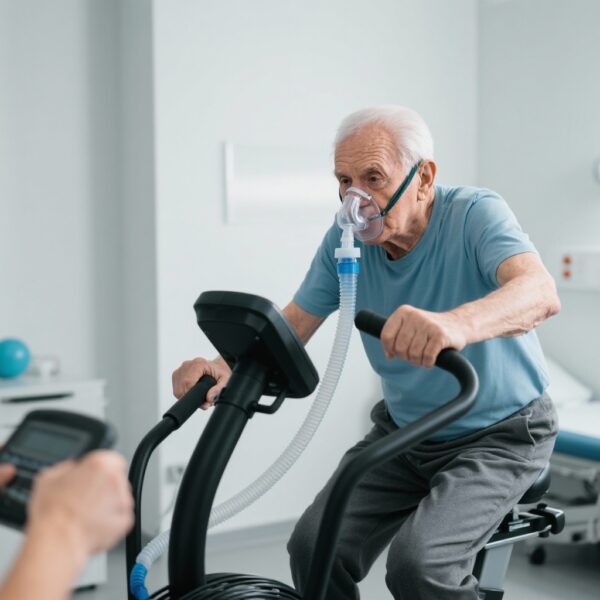Introduction
The landscape of critical care medicine has evolved significantly over recent decades, with a growing emphasis on not only survival but also quality of life post-discharge. Rehabilitation, particularly physiotherapy, has emerged as an essential component in this paradigm, aiming to mitigate the physical, cognitive, and psychological sequelae of critical illness. This article critically examines the current state of physiotherapy in ICU settings, highlighting evidence-based benefits, safety considerations, staffing challenges, and future research directions.
Clinical Burden and Rationale for Rehabilitation in Critical Care
Critical illnesses such as severe respiratory failure, sepsis, and multi-organ dysfunction often lead to profound physical impairments, including muscle weakness and impaired mobility, which can persist long after ICU discharge. It is estimated that over 2 billion people worldwide could benefit from physical rehabilitation therapies. Studies have demonstrated that ICU survivors exhibit impairments in exercise capacity and cognitive function for up to five years post-illness, imposing significant healthcare costs and societal burden.
The demographic shift towards an aging population further complicates this scenario, as older patients often present with higher disability and complex care needs. The advent of specialized units such as respiratory intensive care units (RICUs) and prolonged weaning units reflects this need for tailored interventions aimed at restoring functional autonomy.
Evidence for Early Mobilization and Rehabilitation
Several landmark studies underpin early physiotherapeutic interventions in ICU. A pioneering randomized controlled trial (RCT) involving 104 sedated, mechanically ventilated patients demonstrated that a comprehensive, whole-body rehabilitation strategy was safe and associated with decreased delirium and increased ventilator-free days at one month. Furthermore, the intervention improved the rate at which patients regained independent functional status, also reducing hospital length of stay.
However, subsequent studies yielded mixed results regarding survival and long-term disability, owing partly to variability in interventions and patient populations. Meta-analyses of multiple RCTs report that early mobilization consistently improves physical function and reduces ICU and hospital durations, with a 95% probability of enhancing physical capacity and a 75% probability of increasing days alive after discharge. Importantly, these reviews confirm that early mobilization does not increase adverse events or mortality, reinforcing its safety.
Safety and Feasibility of Physiotherapy in ICU
Concerns about patient safety have historically limited early physiotherapy; however, extensive evidence now supports its safety profile. Systematic reviews of over 6,700 ICU patients have shown minimal adverse event rates (<3%), with no significant impact on mortality. These findings reinforce that with appropriate protocols, early mobilization is a feasible and safe intervention even in the most critically ill cohorts.
Challenges in Staffing and Implementation
Despite robust evidence, the integration of physiotherapy in ICU faces logistic and systemic barriers. Many countries lack national guidelines on staffing ratios, leading to inconsistent availability of specialized therapists. Historically, physiotherapists were underrepresented in ICU teams; in some regions, only 25% of ICUs had dedicated physiotherapists, and many therapists were involved only intermittently.
In Europe, efforts by societies such as the European Respiratory Society (ERS) and the European Society of Intensive Care Medicine (ESICM) have led to recommendations for best practices in respiratory and physical therapy, emphasizing the importance of specialized training. Recently, postgraduate programs such as ERS-HERMES aim to standardize education and competence. Nevertheless, a gap remains between evidence and practice, exacerbated by disparities in training, education, and healthcare policies.
Future Directions and Research Priorities
Future research should focus on optimizing delivery modalities, such as the timing, intensity, and duration of physiotherapy interventions, tailored to individual patient trajectories. Understanding which subgroups benefit most will enable targeted resource allocation and improve outcomes. Additionally, developing standardized education pathways for physiotherapists in critical care will bolster workforce capacity.
Emerging areas include the integration of noninvasive ventilation in early mobilization practices, the use of technology for remote monitoring, and evaluating the long-term impact of ICU rehabilitation programs on quality of life and functional independence. Addressing these priorities will ensure that physiotherapy remains at the forefront of holistic critical care management.
Conclusion
The evidence supports early, safe, and effective physiotherapy interventions as integral to ICU care, with benefits extending beyond physical recovery to long-term functional independence. Overcoming systemic barriers and standardizing training programs are critical to expanding access and optimizing patient outcomes. As critical care continues to evolve, so too must our approaches to rehabilitation, ensuring that survival is complemented by restored quality of life.
References
Clini E, Costi S, Girardis M. Rehabilitation and physiotherapists in the critical care medicine. Pulmonology. 2025 Dec 31;31(1):2416831. doi: 10.1016/j.pulmoe.2024.04.006. Epub 2024 Oct 25. PMID: 38824061.



